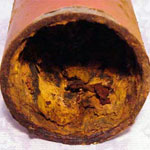Hey doc, well this isnt really a question, but a comment on an observation i made. I’ve read your posts on how smoking may cause hair loss,which kind of intrigued me a little. I recently started smoking again after 8 months of quitting, and the hair on my left hand got introduced to a lot of smoke about 5-6 times daily. Today,after a week of smoking, I’ve noticed that the hairs on my left hand fingers and back of my hand have either shortened, or have disappeared. What makes me believe that smoking has caused it, is that the hair on my right hand fingers are just as they used to be. It doesn’t seem to be a possibility that the cigarette smoke ‘burnt’ my hair off because if that was the case the the back of my hand wouldn’t have lost hair, and smoke from a cigarette isn’t hot enough to be able to do that anyways.
I know the mechanism behind your statement on smoking and hair loss is related to the blood flow, but there may be another way on how smoking damages hair. It’s a toxic emission and has caused the hair to die off. Something I would now try to keep my head hair away from, and it’s now made me think of qutting again! I know that body hair is different from head hair, but who knows, and I’m not willing to risk my already dying head hair!

I don’t have much to add to your comments, so I’ll just say that your statement alone expresses the unknowns and your observations stand on their own. Smoking is harmful in many ways.

 Fucidin H contains a steroid and I believe that continued use can be a problem. Short term use is best, like a few days and then a rest period for the rest of the week… and then repeat the process. The red color should subside over time.
Fucidin H contains a steroid and I believe that continued use can be a problem. Short term use is best, like a few days and then a rest period for the rest of the week… and then repeat the process. The red color should subside over time. One of the major causes of discolored water like you describe is rusty water pipes, but I doubt that it’s drainage that you are putting on your head. I do not know of hair loss side effects for this type of water, but it does produce stains on your sink/tub that are similar to hard water, which is loaded with minerals. If you have hard water, you will see that the shampoo you use does not create suds well. Yet, even hard water will not impact your hair as long as you treat it gently.
One of the major causes of discolored water like you describe is rusty water pipes, but I doubt that it’s drainage that you are putting on your head. I do not know of hair loss side effects for this type of water, but it does produce stains on your sink/tub that are similar to hard water, which is loaded with minerals. If you have hard water, you will see that the shampoo you use does not create suds well. Yet, even hard water will not impact your hair as long as you treat it gently.